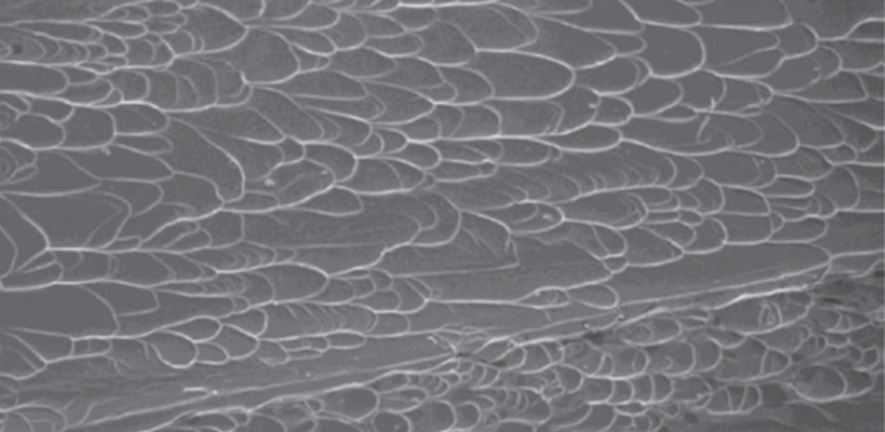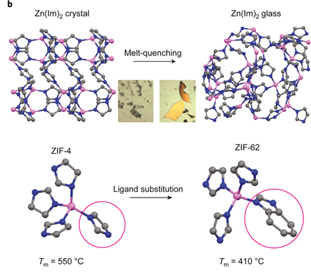
Banner image: The fracture surface of a copper-based bulk metallic glass: the ‘vein’ pattern is associated with a novel deformation mode that underlies combinations of strength and toughness that are better than those of any other known material.
In 1995, P.W. Anderson wrote that "the deepest and most interesting unsolved problem in solid state theory is probably the theory of the nature of glass and the glass transition"; since that time, interest in glasses, and in amorphous materials generally, has only intensified. Our work focuses on metallic, chalcogenide and metal-organic framework systems that show amorphous phases, and covers fundamental new synthetic strategies and glass chemistries, alongside new and innovative applications. In particular, we explore novel methods for accessing and manipulating the amorphous state; we probe the limits of stability and instability to which the amorphous state can be pushed, we measure extended and unprecedented properties, and we explore the widening range of applications, structural and functional, for novel amorphous materials.
The image below illustrates how a very small chemical change in a metal-organic framework structure can have a dramatic effect on melting point.

